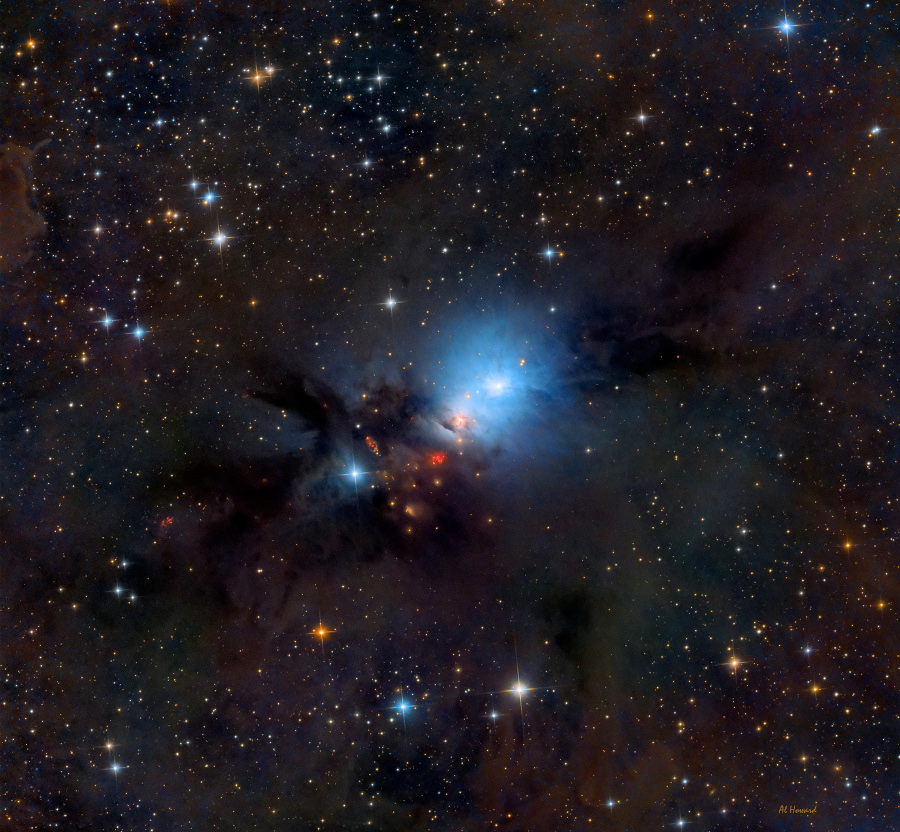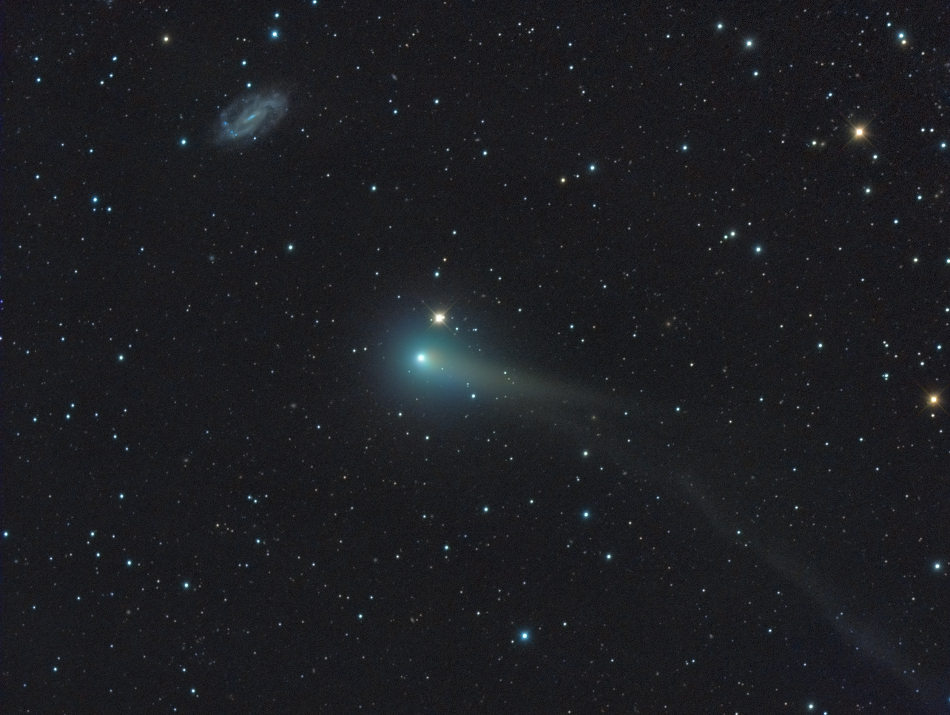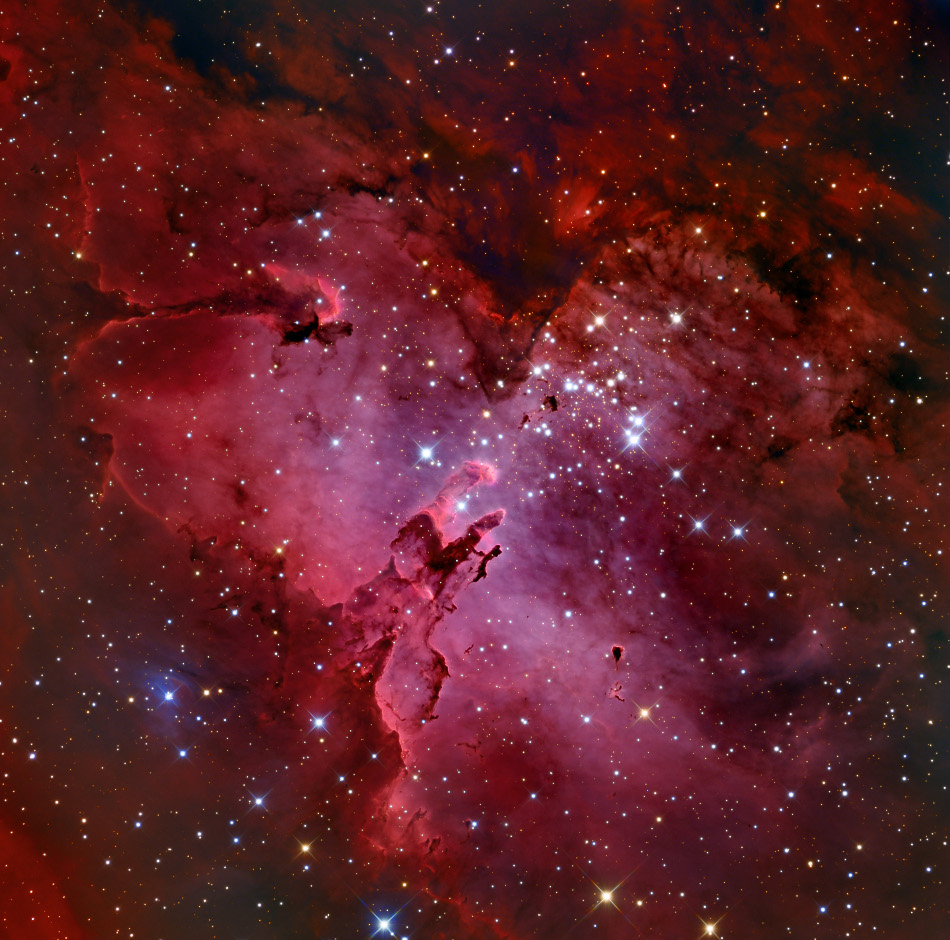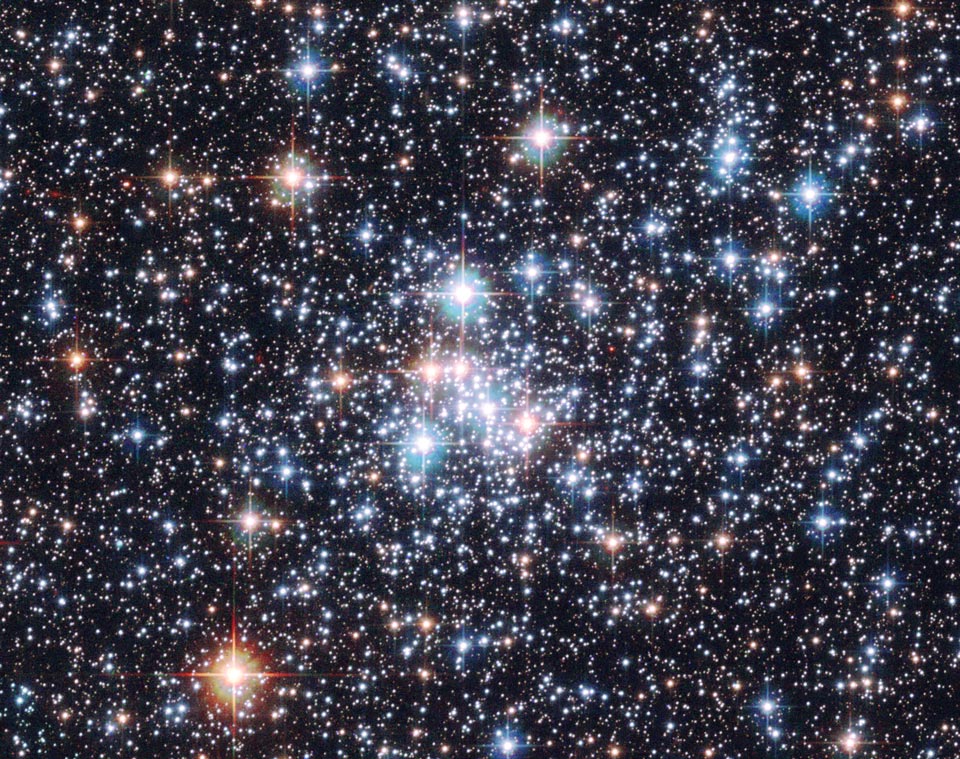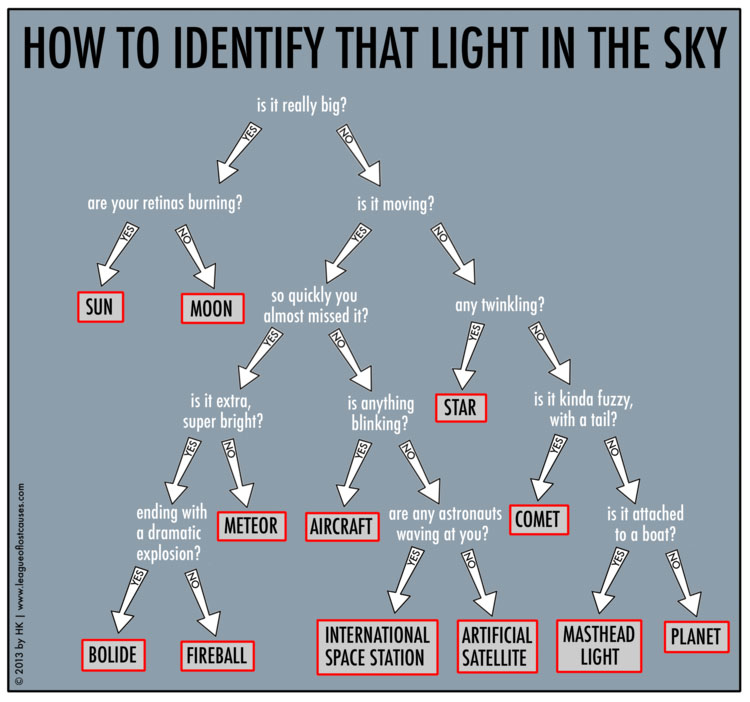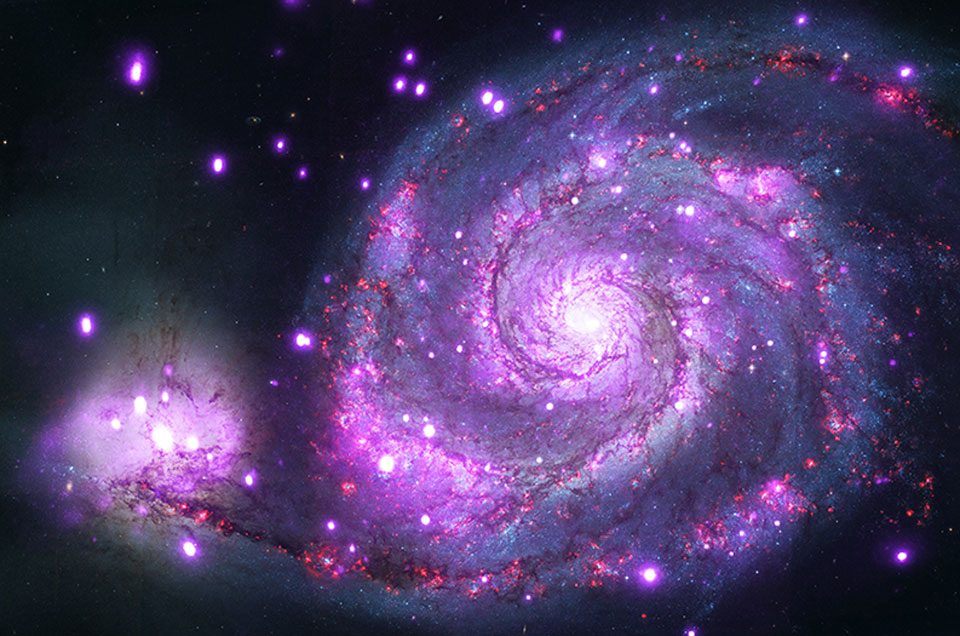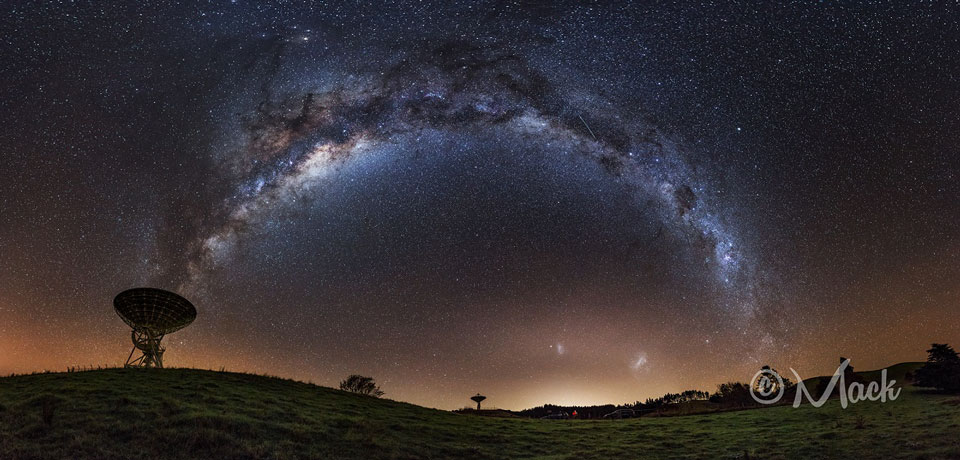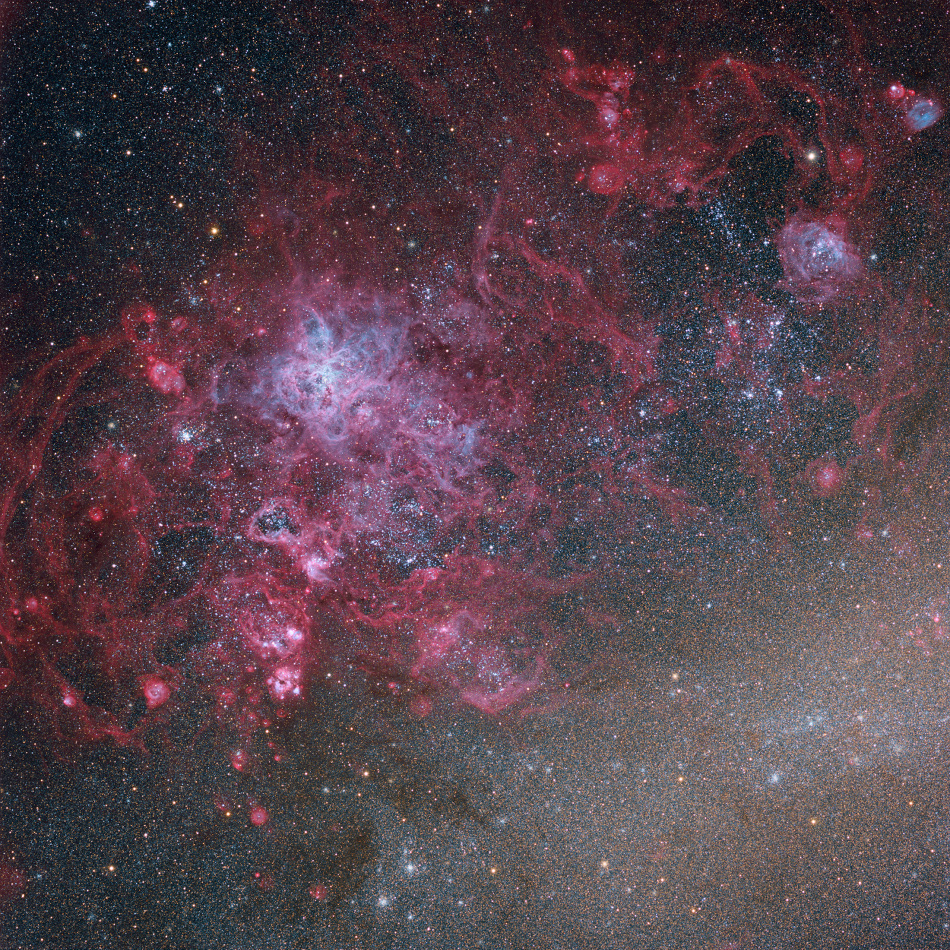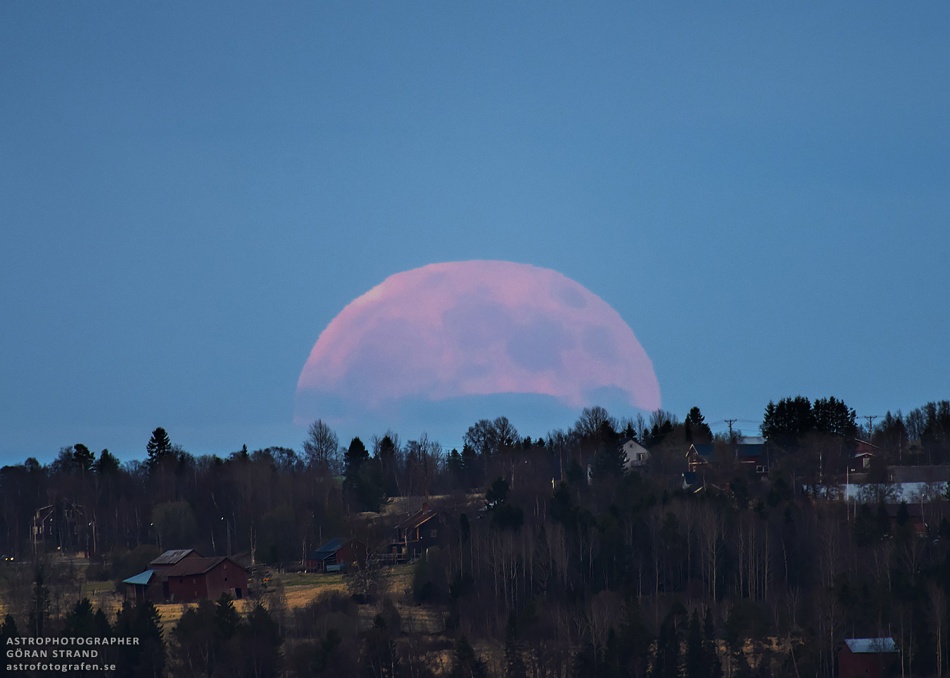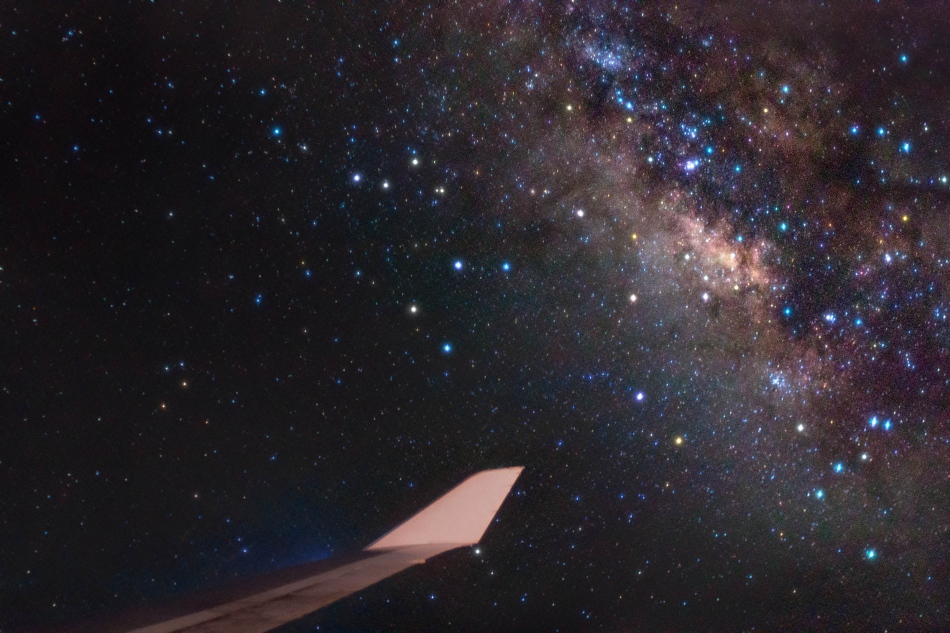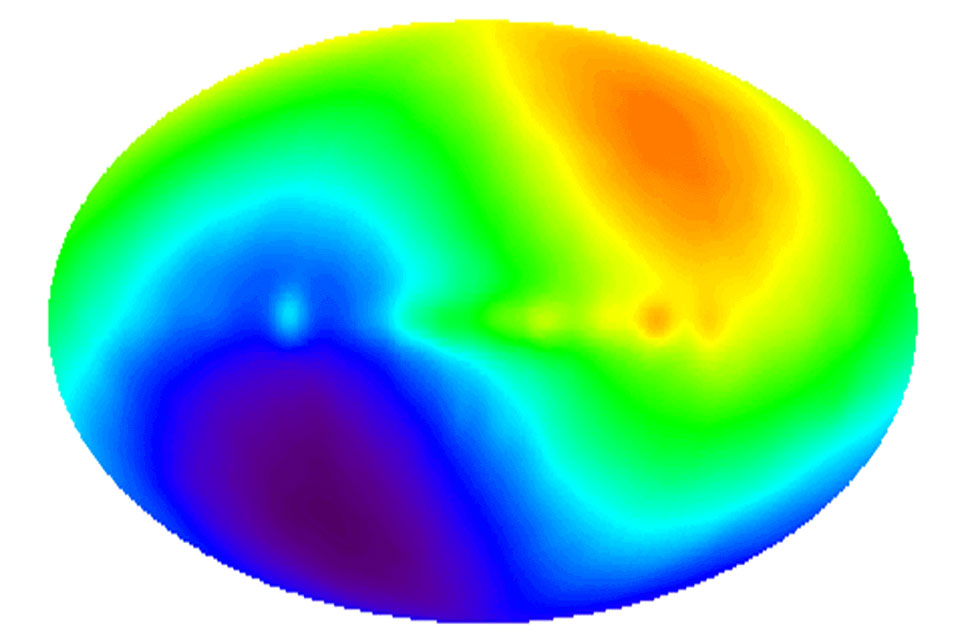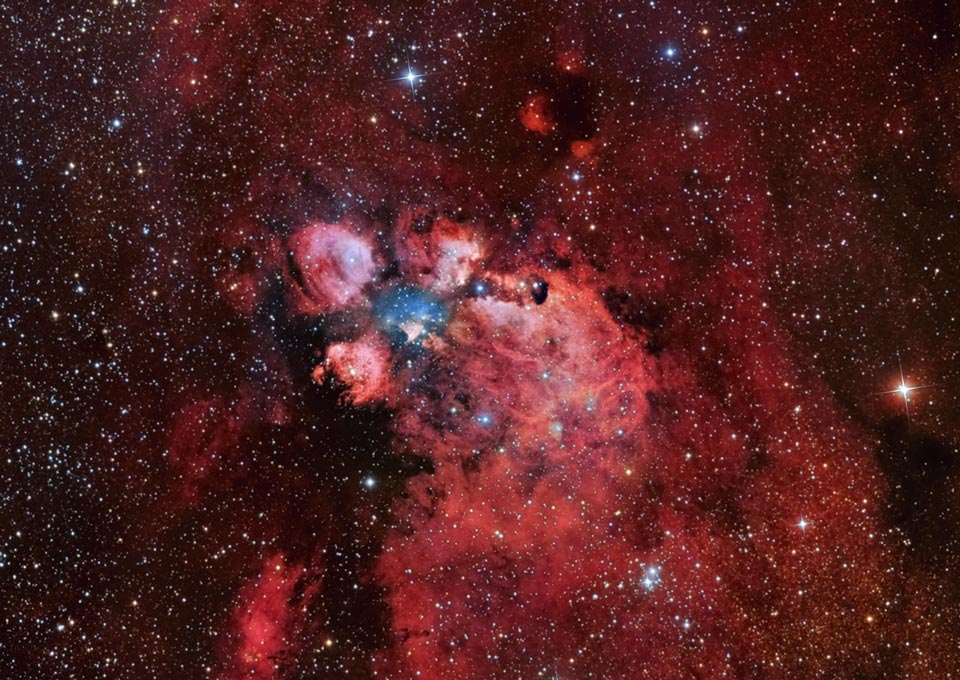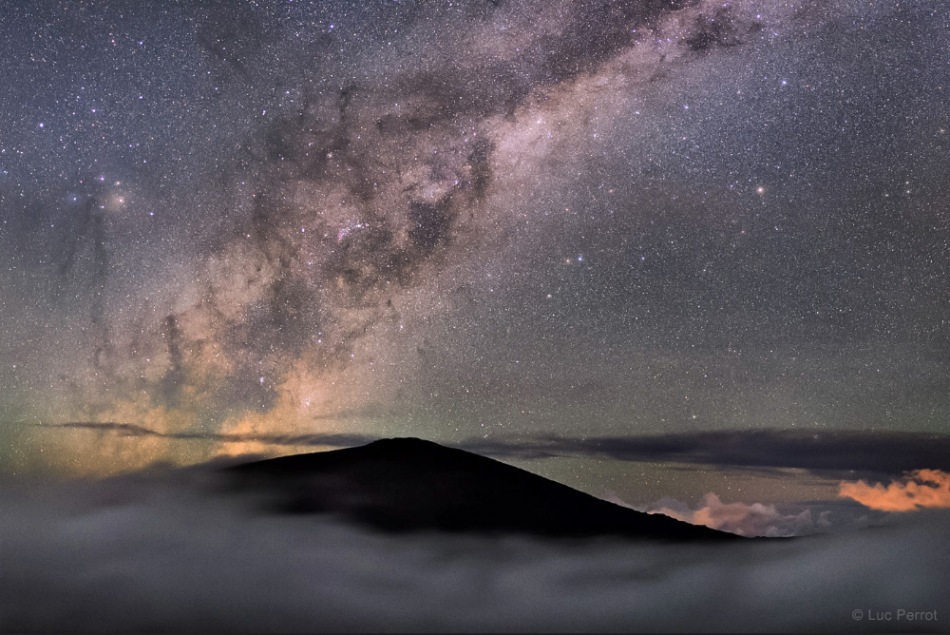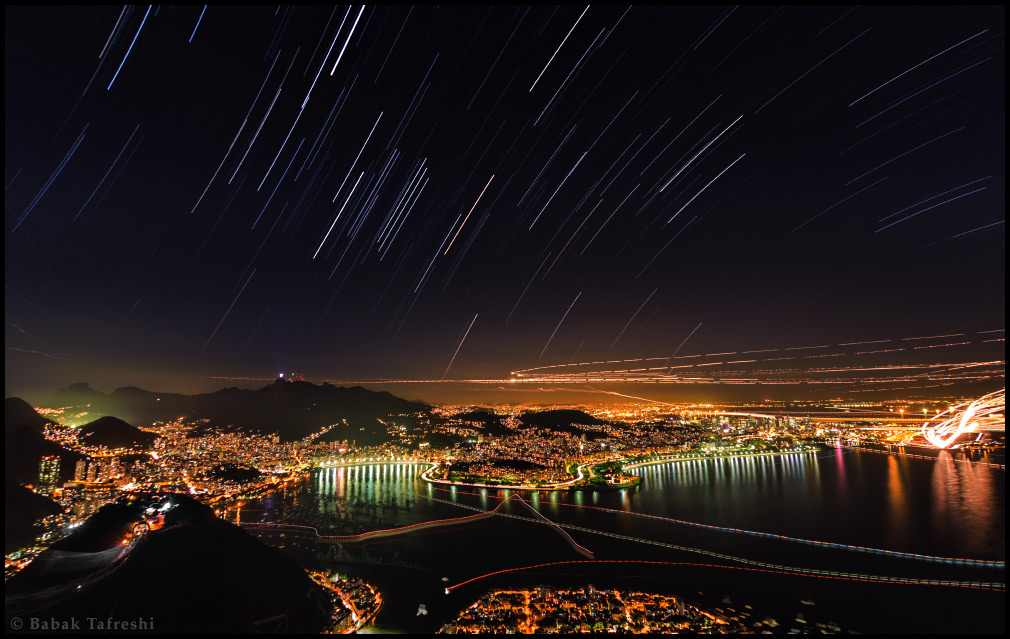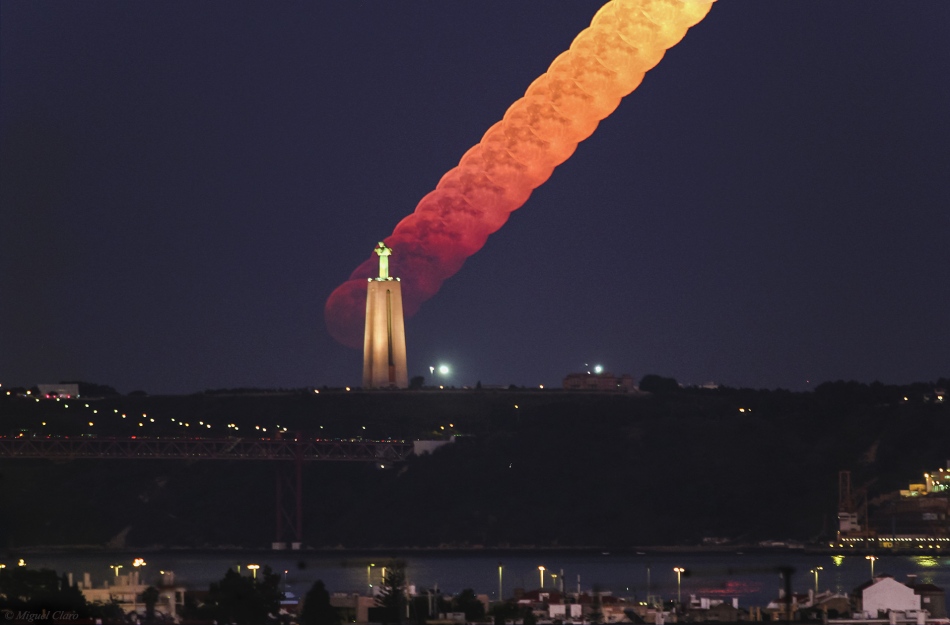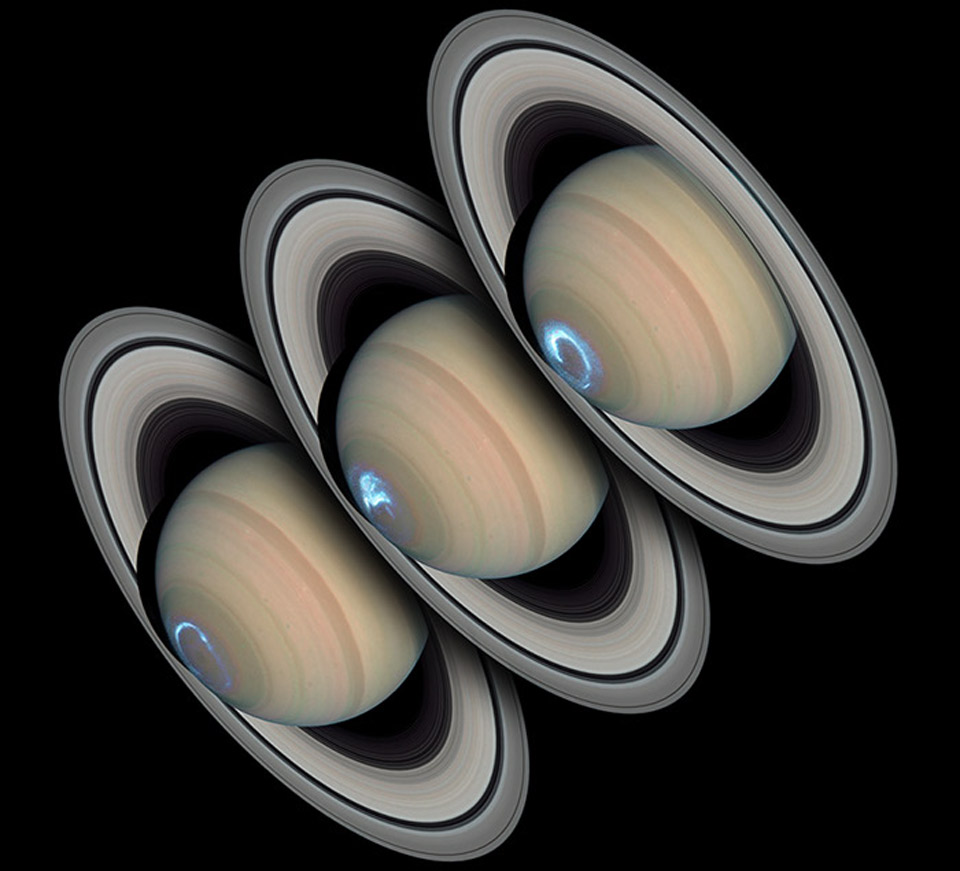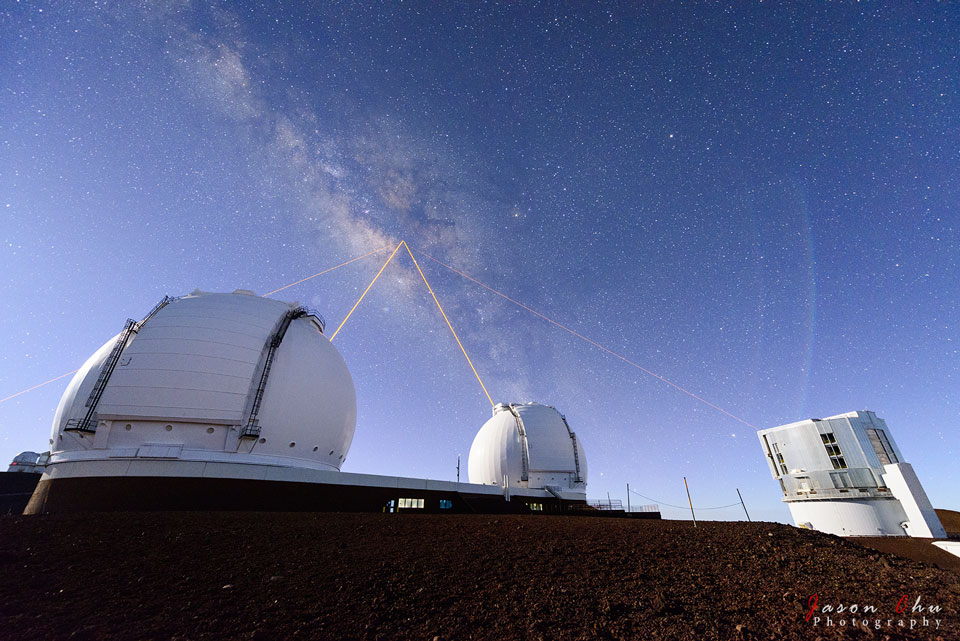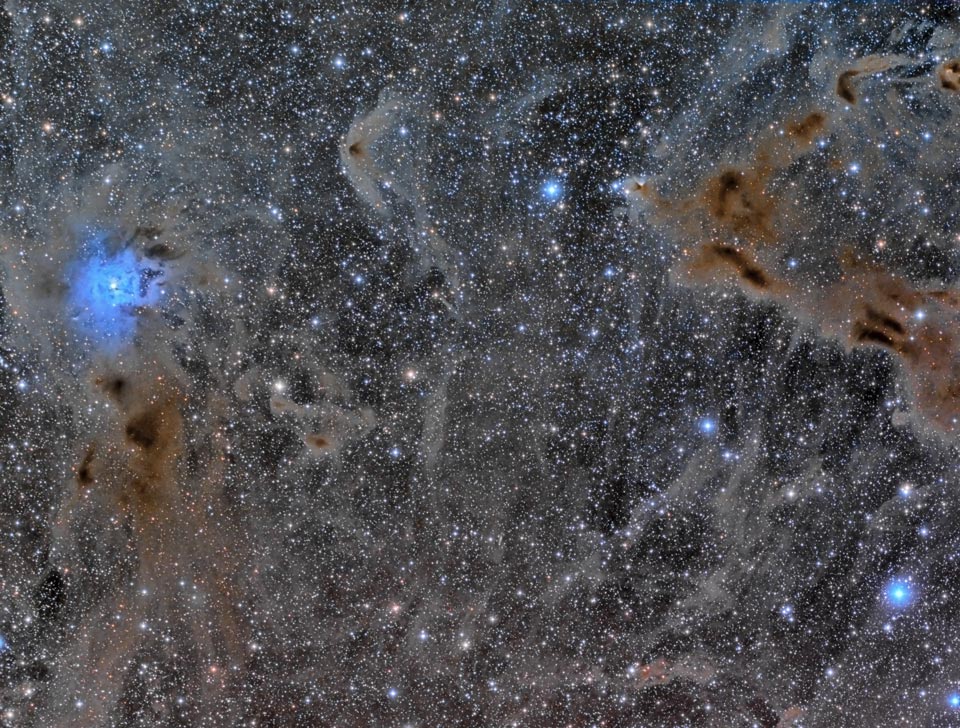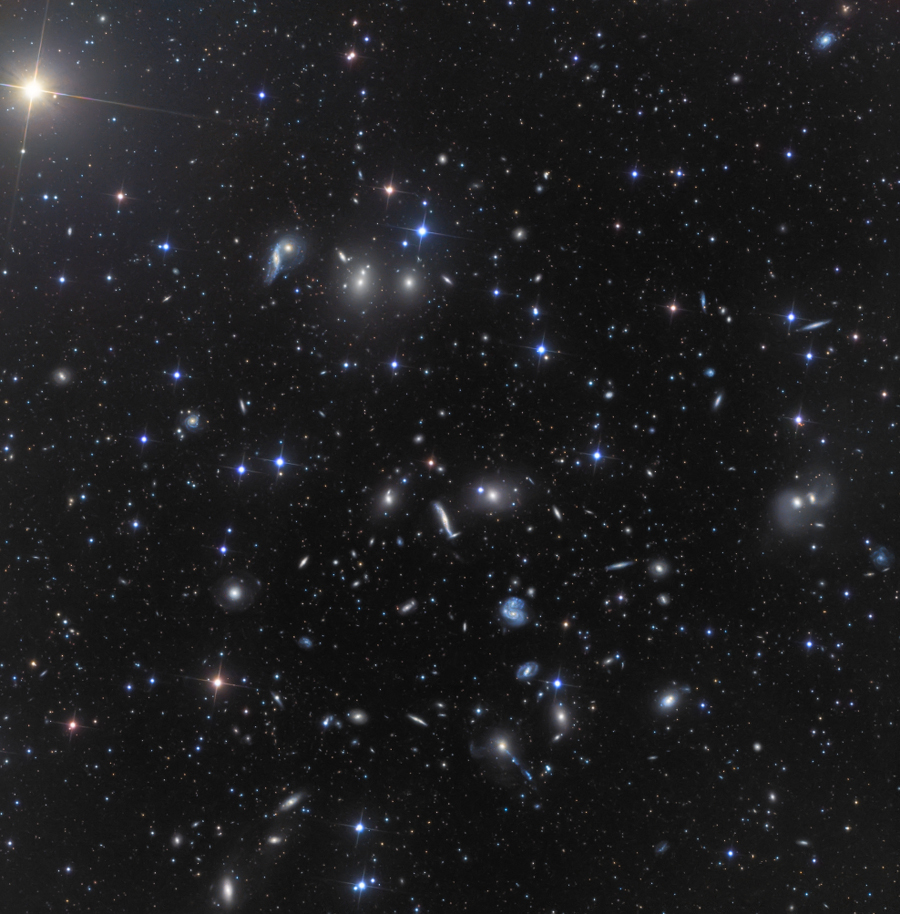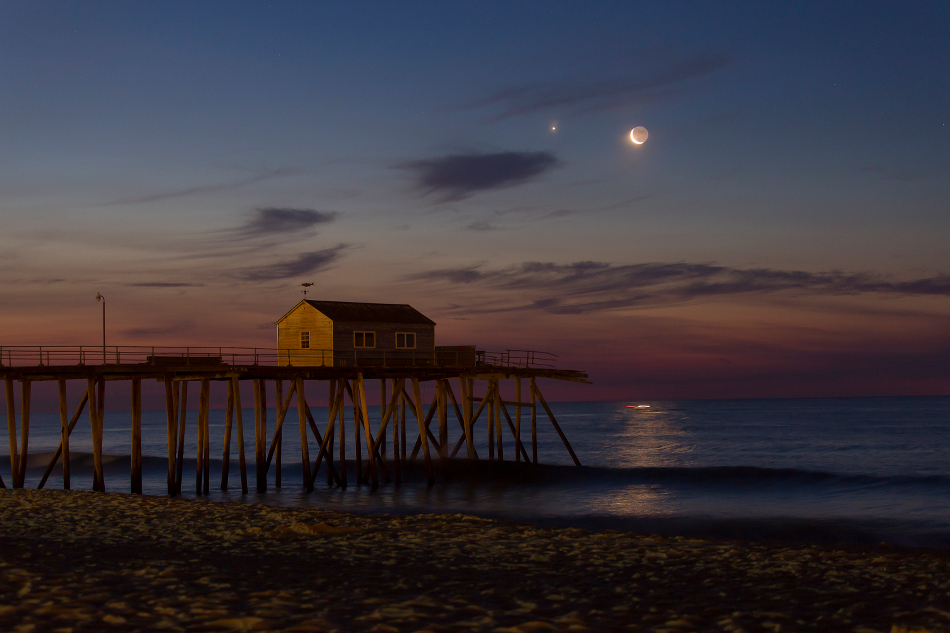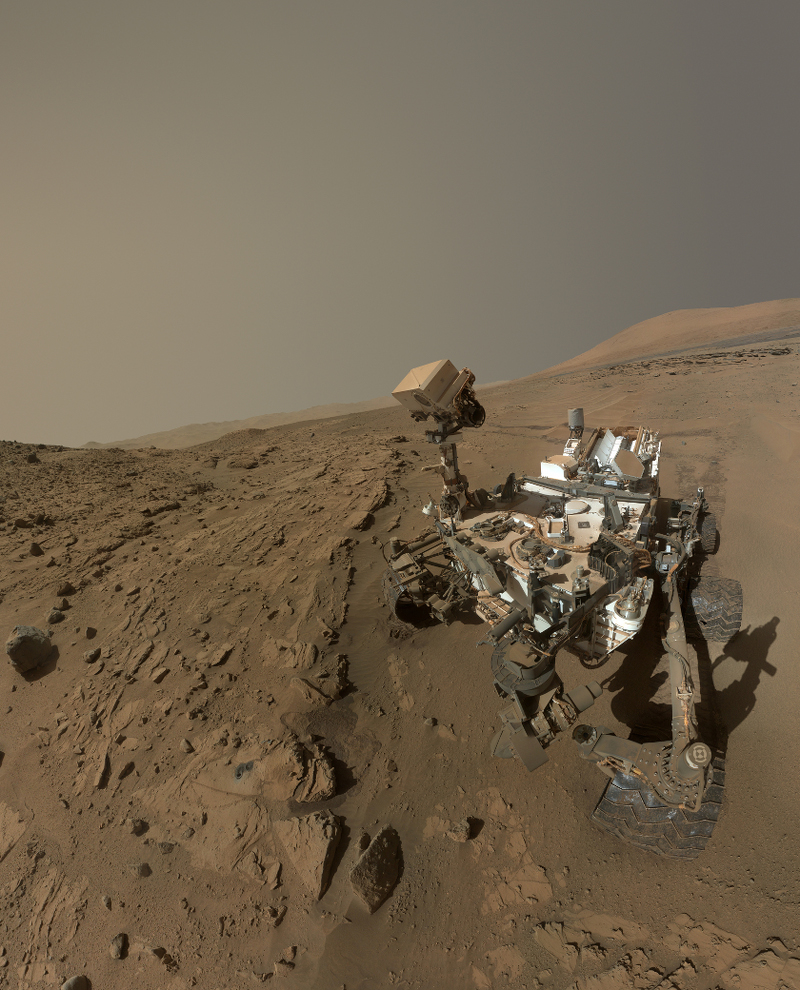
|
| Title: Astronomy Picture of the Day | |
| friendsoffortiesfive > General > General Discussion | Go to subcategory: |
| Author | Content |
|
Niceguy2
|
|
|
Date Posted:03/06/2014 11:29 PMCopy HTML I really love this site and |
|
|
Niceguy2
|
#151 |
|
Re:Astronomy Picture of the Day Date Posted:06/07/2014 12:07 AMCopy HTML Image Credit & Copyright: Alessandro Falesiedi Explanation: Sweeping slowly through northern skies, the comet PanSTARRS C/2012 K1 posed for this telescopic portrait on June 2nd in the constellation Ursa Major. Now in the inner solar system, the icy body from the Oort cloud sports two tails, a lighter broad dust tail and crooked ion tail extending below and right. The comet's condensed greenish coma makes a nice contrast with the spiky yellowish background star above. NGC 3319 appears at the upper left of the frame that spans almost twice the apparent diameter of the full Moon. The spiral galaxy is about 47 million light-years away, far beyond the stars in our own Milky Way. In comparison, the comet was a mere 14 light-minutes from our fair planet. This comet PanSTARRS will slowly grow brighter in the coming months remaining a good target for telescopic comet watchers and reaching perihelion, its closest approach to the Sun, while just beyond Earth's orbit in late August. |
|
|
Niceguy2
|
#152 |
|
Re:Astronomy Picture of the Day Date Posted:06/07/2014 9:02 PMCopy HTML Image Credit & Copyright: Adam Block, Mt. Lemmon SkyCenter, Univ. Arizona Explanation: A star cluster around 2 million years young, M16 is surrounded by natal clouds of dust and glowing gas also known as The Eagle Nebula. This beautifully detailed image of the region includescosmic sculptures made famous in Hubble Space Telescope close-ups of the starforming complex. Described as elephant trunks or Pillars of Creation, dense, dusty columns rising near the center are light-years in length but are gravitationally contracting to form stars. Energetic radiation from the cluster stars erodes material near the tips, eventually exposing the embedded new stars. Extending from the left edge of the frame is another dusty starforming column known as the Fairy of Eagle Nebula. M16 and the Eagle Nebula lie about 7,000 light-years away, an easy target for binoculars or small telescopes in a nebula rich part of the sky toward the split constellation Serpens Cauda (the tail of the snake). |
|
|
Niceguy2
|
#153 |
|
Re:Astronomy Picture of the Day Date Posted:06/08/2014 10:29 PMCopy HTML Image Credit: ESA & NASA; Acknowledgement: E. Olszewski (U. Arizona) Explanation: Jewels don't shine this bright -- only stars do. Like gems in a jewel box, though, the stars of open cluster NGC 290 glitter in a beautiful display of brightness and color. The photogenic cluster,pictured above, was captured recently by the orbiting Hubble Space Telescope. Open clusters of stars are younger, contain few stars, and contain a much higher fraction of blue stars than do globular clustersof stars. NGC 290 lies about 200,000 light-years distant in a neighboring galaxy called the Small Cloud of Magellan (SMC). The open cluster contains hundreds of stars and spans about 65 light years across.NGC 290 and other open clusters are good laboratories for studying how stars of different masses evolve, since all the open cluster's stars were born at about the same time. |
|
|
Niceguy2
|
#154 |
|
Re:Astronomy Picture of the Day Date Posted:06/09/2014 8:28 PMCopy HTML Image Credit & Copyright: HK (The League of Lost Causes) Explanation: What is that light in the sky? Perhaps one of humanity's more common questions, an answer may result from a few quick observations. For example -- is it moving or blinking? If so, and if you live near a city, the answer is typically an airplane, since planes are so numerous and so few stars and satellites are bright enough to be seen over the din of artificial city lights. If not, and if you live far from a city, that bright light is likely a planet such as Venus or Mars -- the former of which is constrained to appear near the horizon just before dawn or after dusk. Sometimes the low apparent motion of a distantairplane near the horizon makes it hard to tell from a bright planet, but even this can usually be discerned by the plane's motion over a few minutes. Still unsure? The above chart gives a sometimes-humorous but mostly-accurate assessment. Dedicated sky enthusiasts will likely note -- and are encouraged to provide -- polite corrections. |
|
|
Niceguy2
|
#155 |
|
Re:Astronomy Picture of the Day Date Posted:06/10/2014 8:15 PMCopy HTML Image Credit & Copyright: X-ray: NASA, CXC, R. Kilgard (Wesleyan U. et al.; Optical: NASA, STScI Explanation: What if we X-rayed an entire spiral galaxy? This was done (again) recently by NASA's Chandra X-ray Observatory for the nearby interacting galaxies known as the Whirlpool (M51). Hundreds of glittering x-ray stars are present in the above Chandra image of the spiral and its neighbor. The image is a conglomerate of X-ray light from Chandra and visible light from the Hubble Space Telescope. The number of luminous x-ray sources, likely neutron star and black hole binary systems within the confines of M51, is unusually high for normal spiral or elliptical galaxies and suggests this cosmic whirlpool has experienced intense bursts of massive star formation. The bright cores of both galaxies, NGC 5194 and NGC 5195 (right and left respectively), also exhibit high-energy activity. In this false-color image where X-rays are depicted in purple, diffuse X-ray emission typically results from multi-million degree gas heated by supernova explosions. |
|
|
Niceguy2
|
#156 |
|
Re:Astronomy Picture of the Day Date Posted:06/11/2014 10:38 PMCopy HTML Image Credit & Copyright: Mike Mackinven Explanation: No, radio dishes cannot broadcast galaxies. Although they can detect them, the above image features a photogenic superposition during a dark night in New Zealand about two weeks ago. Aspictured above, the central part of our Milky Way Galaxy is seen rising to the east on the image left and arching high overhead. Beneath the Galactic arc and just above the horizon are the two brightest satellite galaxies of our Milky Way, with the Small Magellanic Cloud to the left and the Large Magellanic Cloud on the right. The radio dish is the Warkworth Satellite Station located just north of Auckland. |
|
|
Niceguy2
|
#157 |
|
Re:Astronomy Picture of the Day Date Posted:06/12/2014 9:27 PMCopy HTML Image Credit & Copyright: Marco Lorenzi Explanation: The Tarantula Nebula is more than 1,000 light-years in diameter, a giant star forming region within our neighboring galaxy the Large Magellanic Cloud (LMC). That cosmic arachnid lies toward the upper left in this deep and colorful telescopic view made through broad-band and narrow-band filters. The image spans nearly 2 degrees (4 full moons) on the sky and covers a part of the LMC over 8,000 light-years across. Within the Tarantula (NGC 2070), intense radiation, stellar winds and supernova shocks from the central young cluster of massive stars, cataloged as R136, energize the nebular glow and shape the spidery filaments. Around the Tarantula are other violent star-forming regions with young star clusters, filaments, and bubble-shaped clouds In fact, the frame includes the site of the closest supernova in modern times, SN 1987A, just above center. The rich field of view is located in the southern constellation Dorado. |
|
|
Niceguy2
|
#158 |
|
Re:Astronomy Picture of the Day Date Posted:06/13/2014 9:41 PMCopy HTML Image Credit & Copyright: Göran Strand Explanation: June's Full Moon (full phase on June 13, 0411 UT) is traditionally known as the Strawberry Moon or Rose Moon. Of course those names might also describe the appearance of this Full Moon, rising last month over the small Swedish village of Marieby. The Moon looks large in the image because the scene was captured with a long focal length lens from a place about 8 kilometers from the foreground houses. But just by eye a Full Moon rising, even on Friday the 13th, will appear to loom impossibly large near the horizon. That effect has long been recognized as the Moon Illusion. Unlike the magnification provided by a telescope or telephoto lens, the cause of the Moon illusion is still poorly understood and not explained by atmospheric optical effects, such as scattering and refraction, that produce the Moon's blushing color and ragged edge also seen in the photograph. |
|
|
Niceguy2
|
#159 |
|
Re:Astronomy Picture of the Day Date Posted:06/14/2014 7:38 PMCopy HTML Image Credit & Copyright: Alessandro Merga Explanation: Bright stars of Sagittarius and the center of our Milky Way Galaxy lie just off the wing of a Boeing 747 in this astronomical travel photo. The stratospheric scene was captured earlier this month during a flight from New York to London, 11,0000 meters above the Atlantic Ocean. Of course the sky was clear and dark at that altitude, ideal conditions for astronomical imaging. But there were challenges to overcome while looking out a passenger window of the aircraft moving at nearly 1,000 kilometers per hour (600 mph). Over 90 exposures of 30 seconds or less were attempted with a fast lens and sensitive camera setting, using a small, flexible tripod and a blanket to block reflections of interior lighting. In the end, one 10 second long exposure resulted in this steady and colorful example of airborne astronomy. |
|
|
Niceguy2
|
#160 |
|
Re:Astronomy Picture of the Day Date Posted:06/15/2014 9:46 PMCopy HTML Image Credit: DMR, COBE, NASA, Four-Year Sky Map Explanation: Our Earth is not at rest. The Earth moves around the Sun. The Sun orbits the center of the Milky Way Galaxy. The Milky Way Galaxy orbits in the Local Group of Galaxies. The Local Group falls toward the Virgo Cluster of Galaxies. But these speeds are less than the speed that all of these objects together move relative to the cosmic microwave background radiation (CMBR). In the above all-sky map from the COBE satellite, radiation in the Earth's direction of motion appears blueshifted and hence hotter, while radiation on the opposite side of the sky is redshifted and colder. The map indicates that the Local Group moves at about 600 kilometers per second relative to this primordial radiation. This high speed was initially unexpected and its magnitude is still unexplained. Why are we moving so fast?What is out there? |
|
|
Niceguy2
|
#161 |
|
Re:Astronomy Picture of the Day Date Posted:06/16/2014 11:07 PMCopy HTML 2014 June 16 Image Credit: Stuart Lowe, LCOGT/Virtual Sky Explanation: The first APOD appeared 19 years ago today. To help celebrate, APOD brings you today an all-sky heatmap of (nearly) 19 years of APOD entries. The brighter a region appears on the above heatmap, the more APODs that occur in that region. Clicking anywhere on the map will bring up a link to all APODs, if any, that appear nearby. We at APOD again thank our readers, NASA, astrophotographers, volunteers who translate APOD daily into over 20 languages, volunteers who run APOD's over 20 mirror sites, volunteers who answer questions and administer APOD's main discussion board, and volunteers who run and update APOD's social media sites and smartphone applications for their continued support. |
|
|
Niceguy2
|
#162 |
|
Re:Astronomy Picture of the Day Date Posted:06/17/2014 9:11 PMCopy HTML 2014 June 17 <iframe width="960" height="540" src="//www.youtube.com/embed/93L0IEbUJsk" frameborder="0" allowfullscreen=""></iframe> Image Credit: ESA, NASA, Hubble Space Telescope; Music: The Driving Force (Jingle Punks) Explanation: What caused this outburst of V838 Mon? For reasons unknown, star V838 Mon suddenly became one of the brightest stars in the entire Milky Way Galaxy. Then, just a few months later, it faded. A stellar flash like this has never been seen before -- supernovas and novas expel a tremendous amount of matter out into space. Although the V838 Mon flash appeared to expel some material into space, what is seen in the above eight-frame movie, interpolated for smoothness, is actually an outwardly moving light echo of the flash. The actual time-span of the above movie is from 2002, when the flash was first recorded, to 2006. In a light echo, light from the flash is reflected by successively more distant ellipsoids in the complex array of ambient interstellar dust that already surrounded the star. Currently, theleading model for V838's outburst was the orbital decay and subsequent merging of two relatively normal stars. V838 Mon lies about 20,000 light years away toward the constellation of Monoceros, while the largest light echo above spans about six light years in diameter. |
|
|
tamarafromTX
|
#163 |
|
Re:Astronomy Picture of the Day Date Posted:06/18/2014 3:38 AMCopy HTML
|
|
|
Niceguy2
|
#164 |
|
Re:Astronomy Picture of the Day Date Posted:06/18/2014 9:38 PMCopy HTML Image Credit & Copyright: Roberto Colombari and SONEAR Obs.; Color data: Robert Gendler & Ryan Hannahoe Explanation: Nebulas are perhaps as famous for being identified with familiar shapes as perhaps cats are for getting into trouble. Still, no known cat could have created the vast Cat's Paw Nebula visible inScorpius. At 5,500 light years distant, Cat's Paw is an emission nebula with a red color that originates from an abundance of ionized hydrogen atoms. Alternatively known as the Bear Claw Nebula or NGC 6334, stars nearly ten times the mass of our Sun have been born there in only the past few million years. Pictured above is a deep field image of the Cat's Paw nebula. |
|
|
Niceguy2
|
#165 |
|
Re:Astronomy Picture of the Day Date Posted:06/20/2014 1:02 AMCopy HTML Image Credit & Copyright: Luc Perrot Explanation: The central bulge of our Milky Way Galaxy rises above a sea of clouds in this ethereal scene. An echo of the Milky Way's dark dust lanes, the volcanic peak in foreground silhouette is on France's Réunion Island in the southern Indian Ocean. Taken in February, the photograph was voted the winner of the 2014 International Earth and Sky Photo Contest's Beauty of the Night Sky Category. This and other winning and notable images from the contest were selected from over a thousand entries from 55 countries around planet Earth. Also featured in the contest compilation video (vimeo), the moving images are a testament to the importance and beauty of our world at night. |
|
|
Niceguy2
|
#166 |
|
Re:Astronomy Picture of the Day Date Posted:06/21/2014 12:41 AMCopy HTML Image Credit & Copyright: Babak Tafreshi (TWAN) Explanation: In this night skyscape setting stars trail above the western horizon over Rio de Janeiro, Brazil, a venue for the 2014 World Cup. Gentle arcs from the bright, colorful stars of Orion are near the center of the frame, while the starfield itself straddles planet Earth's celestial equator during the long exposure. Of course, trails from more local lights seem to create the strident paths through the scene. Air traffic smears an intense glow over an airport at the far right, while helicopters fly above the city and boats cruise near the coast. Striping the waterfront are tantalizing reflections of bright lights along Rio's central beaches, Botafogo and Flamengo. Near the horizon, the brightest fixed light is the famous Cristo statue overlooking Rio at night. |
|
|
Niceguy2
|
#167 |
|
Re:Astronomy Picture of the Day Date Posted:06/21/2014 11:22 PMCopy HTML Image Credit & Copyright: Miguel Claro Explanation: The Sun set on Friday the 13th as a full Honey Moon rose, captured in this well-planned time-lapse sequence. Lisbon, Portugal's Christ the King monument is in the foreground, about 6 kilometers distant from camera and telephoto lens. During the days surrounding today's solstice (June 21, 10:51 UT) the Sun follows its highest arc through northern hemisphere skies as it travels along theecliptic plane. At night the ecliptic plane is low, and the Full Moon's path close to the ecliptic was also low, the rising Moon separating more slowly from the distant horizon. Northern moon watchers were likely to experience the mysterious Moon Illusion, the lunar orb appearing impossibly large while near the horizon. But the photo sequence shows the Moon's apparent size did not not change at all. Its light was initially scattered by the long line-of-sight through the atmosphere though, and a deeper reddened color gave way to a paler gold as the Full Moon rose into the night. |
|
|
Niceguy2
|
#168 |
|
Re:Astronomy Picture of the Day Date Posted:06/23/2014 2:03 AMCopy HTML Image Credit: J. Clarke (Boston U.) & Z. Levay (STScI), ESA, NASA Explanation: Are Saturn's auroras like Earth's? To help answer this question, the Hubble Space Telescope and the Cassini spacecraft monitored Saturn's South Pole simultaneously as Cassini closed in on the gas giant in January 2004. Hubble snapped images in ultraviolet light, while Cassini recorded radio emissions and monitored the solar wind. Like on Earth, Saturn's auroras make total or partial rings aroundmagnetic poles. Unlike on Earth, however, Saturn's auroras persist for days, as opposed to only minutes on Earth. Although surely created by charged particles entering the atmosphere, Saturn's auroras also appear to be more closely modulated by the solar wind than either Earth's or Jupiter's auroras. The above sequence shows three Hubble images of Saturn each taken two days apart. |
|
|
Niceguy2
|
#169 |
|
Re:Astronomy Picture of the Day Date Posted:06/23/2014 9:31 PMCopy HTML Image Credit & Copyright: Jason Chu (IfA Manoa) Explanation: Are lasers from giant telescopes being used to attack the Galactic center? No. Lasers shot from telescopes are now commonly used to help increase the accuracy of astronomical observations. In some sky locations, Earth atmosphere-induced fluctuations in starlight can indicate how the air mass over a telescope is changing, but many times no bright star exists in the direction where atmospheric information is needed. In these cases, astronomers create an artificial star where they need it -- with a laser. Subsequent observations of the artificial laser guide star can reveal information so detailed about the blurring effects of the Earth's atmosphere that much of this blurring can be removed by rapidly flexing the mirror. Such adaptive optic techniques allow high-resolution ground-based observations of real stars,planets, and nebulae. Pictured above, four telescopes on Mauna Kea, Hawaii, USA are being used simultaneously to study the center of our Galaxy and so all use a laser to create an artificial star nearby. |
|
|
Niceguy2
|
#170 |
|
Re:Astronomy Picture of the Day Date Posted:06/24/2014 8:20 PMCopy HTML Image Credit & Copyright: Mikel Martínez Explanation: What flowers in this field of dark star dust? The Iris Nebula. The striking blue color of the Iris Nebula is created by light from the bright star SAO 19158 reflecting off of a dense patch of normally dark dust. Not only is the star itself mostly blue, but blue light from the star is preferentially reflected by the dust -- the same affect that makes Earth's sky blue. The brown tint of the pervasive dust comes partly from photoluminescence -- dust converting ultraviolet radiation to red light. Cataloged as NGC 7023, the Iris Nebula is studied frequently because of the unusual prevalence there of Polycyclic Aromatic Hydrocarbons (PAHs), complex molecules that are also released on Earth during the incomplete combustion of wood fires. The bright blue portion of the Iris Nebula spans about six light years. TheIris Nebula, pictured above, lies about 1300 light years distant and can be found with a small telescope toward the constellation of Cepheus. |
|
|
Janner_Baker
|
#171 |
|
Re:Astronomy Picture of the Day Date Posted:06/24/2014 8:24 PMCopy HTML  |
|
|
ravch641943
|
#172 |
|
Re:Astronomy Picture of the Day Date Posted:06/24/2014 8:26 PMCopy HTML   |
|
|
Niceguy2
|
#173 |
|
Re:Astronomy Picture of the Day Date Posted:06/25/2014 9:30 PMCopy HTML Image Credit & Copyright: Ken Crawford Explanation: These are galaxies of the Hercules Cluster, an archipelago of island universes a mere 500 million light-years away. Also known as Abell 2151, this cluster is loaded with gas and dust rich, star-forming spiral galaxies but has relatively few elliptical galaxies, which lack gas and dust and the associated newborn stars. The colors in this remarkably deep composite image clearly show the star forming galaxies with a blue tint and galaxies with older stellar populations with a yellowish cast. The sharp picture spans about 3/4 degree across the cluster center, corresponding to over 6 million light-years at the cluster's estimated distance. Diffraction spikes around brighter foreground stars in our own Milky Way galaxy are produced by the imaging telescope's mirror support vanes. In the cosmic vista many galaxies seem to be colliding or merging while others seem distorted - clear evidence that cluster galaxies commonly interact. In fact, the Hercules Cluster itself may be seen as the result of ongoing mergers of smaller galaxy clusters and is thought to be similar to young galaxy clusters in the much more distant, early Universe. |
|
|
Niceguy2
|
#174 |
|
Re:Astronomy Picture of the Day Date Posted:06/26/2014 6:33 PMCopy HTML Image Credit & Copyright: Mike Black Explanation: Early morning risers were treated to a beautiful conjunction of Venus and waning Crescent Moon on June 24, captured in this seaside photo near Belmar, New Jersey, USA, planet Earth. The serene celestial pairing is seen above the Atlantic Ocean horizon as the eastern sky grows brighter with dawn's early light. Wispy, scattered clouds appear in silhouette. But the exposure also reveals the night side of the lunar orb in the arms of the sunlit crescent. That shadowed part of the Moon, with hints of the smooth, dark lunar seas or maria, is illuminated by Earthshine, sunlight reflected from planet Earth itself. |
|
|
Niceguy2
|
#175 |
|
Re:Astronomy Picture of the Day Date Posted:06/27/2014 11:24 PMCopy HTML Image Credit: NASA, JPL-Caltech, MSSS Explanation: June 24th marked the first full Martian year of the Curiosity Rover's exploration of the surface of the Red Planet. That's 687 Earth days or 669 sols since its landing on August 5, 2012. To celebrate, consider this self-portrait of the car-sized robot posing next to a rocky outcrop dubbed Windjana, its recent drilling and sampling site. The mosaicked selfie was constructed with frames taken this April and May using the rover's Mars Hand Lens Imager (MAHLI), intended for close-up work and mounted at the end of the rover's robotic arm. The MAHLI frames used exclude sections that show the arm itself and so MAHLI and the robotic arm are not seen. Famous for panoramic views, the rover's Mastcam is visible though, on top of the tall mast staring toward the left and down at the drill hole. |







